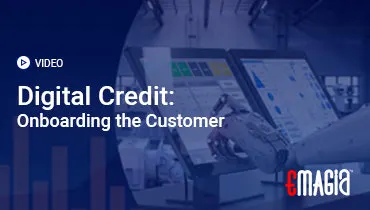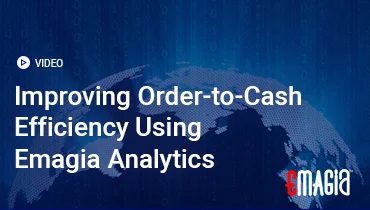Introduction to Credit Management Tool
A credit management tool is an indispensable resource for businesses aiming to enhance their credit control processes and manage financial risk effectively. By leveraging credit management software, companies can streamline debtor management, automate credit decision-making, and improve cash flow visibility.
This guide explores how modern credit management tools empower organizations to manage risk, ensure compliance, and maintain healthy working capital.
Understanding Credit Management Software
Credit management software is designed to provide businesses with a centralized platform for monitoring credit risk, tracking payments, and managing debtor relationships. It integrates advanced analytics, automation, and reporting capabilities to optimize credit control processes.
Modern tools also include features such as real-time credit dashboards, automated credit scoring, compliance tracking, and integration with enterprise resource planning (ERP) systems.
Key Benefits of Credit Management Software
- Risk Reduction: Identify high-risk debtors and prevent bad debt through proactive credit assessment.
- Efficiency: Automation of credit processes reduces manual intervention and increases productivity.
- Compliance: Ensures adherence to credit regulations and standards.
- Improved Cash Flow: Faster credit decision-making and collections improve working capital.
- Data-Driven Decisions: Access to real-time credit data supports informed financial decisions.
Core Features of Credit Management Software
The following features define the capabilities of a modern credit management tool:
Credit Risk Scoring and Assessment
Credit risk scoring evaluates the creditworthiness of customers based on their financial history and payment patterns. This automated assessment reduces risk and improves decision-making efficiency.
Automated Credit Decisioning
Automated credit decisioning removes manual bottlenecks by leveraging pre-set rules and AI algorithms to approve or reject credit applications quickly and consistently.
ERP and CRM Integration
Integration with ERP and CRM systems allows credit managers to access debtor information in real-time, ensuring accurate credit decisions and streamlined workflows.
Debtor Management Dashboards
Dashboards provide a consolidated view of debtor performance, overdue invoices, credit limits, and payment trends, empowering credit managers with actionable insights.
Credit Approval Workflows
Automated workflows route credit applications through approval processes, ensuring compliance and transparency.
Real-Time Credit Exposure Monitoring
Tracking credit exposure in real time allows businesses to react quickly to changing debtor circumstances, mitigating financial risk.
Why Credit Management Tools Are Essential for Businesses
Managing credit is critical for the financial health of any organization. Without proper control over credit, businesses risk facing overdue payments, bad debt, and cash flow challenges. Credit management tools offer the technology needed to automate processes, reduce risk, and ensure smooth operations.
By providing real-time insights, automation, and compliance features, credit management software empowers organizations to make informed decisions and maintain healthy debtor relationships.
Key Reasons Businesses Need Credit Management Tools
- Mitigate Credit Risk: Tools help evaluate debtor risk and avoid losses.
- Streamline Processes: Automation reduces delays in credit approval and collections.
- Enhance Cash Flow: Efficient credit control improves working capital.
- Ensure Compliance: Tools track compliance with regulations and company policies.
- Data-Driven Insights: Real-time dashboards improve decision-making.
Types of Credit Management Tools
Credit management tools come in various forms, each tailored to specific aspects of credit control and risk management. Choosing the right type depends on business needs, industry requirements, and existing systems.
Credit Control Software Packages
Credit control software packages are designed to manage credit control processes, from issuing invoices to monitoring overdue accounts. These packages often include automation of reminders, dispute management, and reporting tools to ensure timely collections and minimal credit risk.
Credit Risk Management Software
This type of software focuses on assessing and mitigating credit risk. It provides tools for credit scoring, risk analytics, monitoring debtor performance, and generating alerts for high-risk accounts. Credit risk management software helps businesses protect themselves from bad debt and optimize credit decision-making.
Credit Management Platforms
These are integrated systems offering a full suite of credit control and risk management features. They combine debtor management, risk assessment, workflow automation, and reporting into a single platform, enabling centralized control and greater efficiency.
Credit Management System Software
Credit management system software is designed to integrate with ERP and accounting systems to provide a unified view of credit and collections. These systems streamline workflows, automate approvals, and improve debtor relationship management.
Benefits of Specialized Credit Management Tools
- Customization: Tailored workflows and dashboards.
- Automation: Reduced manual processes and human error.
- Integration: Seamless connection with ERP, CRM, and payment systems.
- Scalability: Solutions that grow with business needs.
- Advanced Reporting: Detailed analytics for better decision-making.
Key Features to Look for in a Credit Management System
Selecting the right credit management system is essential for ensuring the efficiency and effectiveness of credit control processes. Modern credit management software offers a range of features designed to streamline operations and minimize credit risk.
Automated Credit Decisioning
This feature allows businesses to define rules and criteria for credit approval, enabling quick, consistent decisions while reducing human error.
Credit Risk Analytics
Advanced analytics tools assess credit risk by evaluating debtor behavior, payment history, and market conditions. These insights help organizations prioritize collections and minimize bad debt.
Integrated Debtor Management
A centralized debtor management dashboard provides a consolidated view of all outstanding accounts, overdue payments, and debtor profiles, enhancing operational control.
Customizable Dashboards
Credit managers can tailor dashboards to focus on KPIs, risk metrics, and collections performance, enabling data-driven decision-making.
Regulatory Compliance Tracking
Credit management software must ensure adherence to local and international credit regulations, offering automated compliance checks and reporting.
Credit Limit Monitoring
Automated alerts and reporting on credit limit breaches help organizations maintain control over exposure and avoid excessive risk.
Digital Credit Applications
Online credit applications simplify the process for customers and provide credit managers with structured data for faster processing and approvals.
How Credit Management Tools Improve Cash Flow
Efficient credit control directly impacts an organization’s cash flow. By automating processes and improving debtor communication, credit management tools ensure faster collections and reduced overdue payments.
Automation Reduces Collection Time
Automated reminders and escalation workflows ensure timely follow-up on overdue accounts, accelerating cash recovery.
Real-Time Monitoring Improves Visibility
With real-time dashboards, credit managers can instantly identify potential delays, monitor payment trends, and take corrective action promptly.
Better Risk Assessment Minimizes Bad Debt
Credit risk analysis enables businesses to identify and manage high-risk accounts, ensuring only reliable debtors are extended credit, thereby protecting cash flow.
Enhanced Debtor Relationships
By improving transparency and communication, credit management tools help maintain positive debtor relationships, resulting in smoother collections and repeat business.
Challenges in Implementing Credit Management Software
While credit management tools offer significant benefits, their successful implementation requires careful planning and execution.
Integration with Existing Systems
Ensuring smooth integration with ERP, CRM, and accounting systems is a critical step in maximizing software efficiency.
Data Quality and Accuracy
Accurate and clean data is essential for effective credit decisioning. Organizations must ensure data is validated and maintained.
User Training and Adoption
Staff must be trained to use the new system effectively. Adoption rates depend on user-friendly design and proper onboarding.
Regulatory Compliance Complexity
Credit management systems must adapt to changing regulations, requiring continuous updates and compliance monitoring.
Change Management Requirements
Transitioning from manual to automated credit control processes requires cultural change and stakeholder buy-in to be successful.
The Future of Credit Management Tools
The credit management landscape is evolving rapidly, driven by advances in artificial intelligence, automation, and cloud computing. Businesses that adopt modern credit management tools will benefit from enhanced efficiency, greater accuracy, and better risk control.
AI-Driven Credit Decisioning
Artificial intelligence enables automated, real-time credit assessments by analyzing vast datasets and predicting credit risk more accurately than traditional methods.
Predictive Analytics
Future credit management tools will integrate predictive analytics to forecast payment behavior, identify at-risk accounts, and optimize credit limits.
Cloud-Based Credit Platforms
Cloud technology allows credit management tools to offer scalability, accessibility, and integration across global business operations.
Enhanced Integration
Future systems will offer deeper integration with ERP, CRM, and banking platforms to provide seamless workflows and real-time insights.
Digital Credit Applications and Automation
Automation will extend beyond approvals to include debtor communication, dispute resolution, and payment reconciliation, creating a touchless credit control environment.
How Emagia Empowers Credit Management
Emagia’s Credit Management Platform delivers a comprehensive solution for modern credit control, combining automation, risk analytics, and compliance management in a single platform.
By leveraging Emagia’s tools, organizations can streamline credit approval processes, improve cash flow, and reduce the risk of bad debt.
Key Benefits of Emagia’s Credit Management Solution
- Automated credit decision workflows powered by AI
- Real-time dashboards with debtor insights
- Integrated risk scoring and monitoring
- Compliance and regulatory tracking
- Seamless ERP and CRM integration
- Scalable solutions for businesses of all sizes
FAQs about Credit Management Tools
What is a credit management tool?
A credit management tool is software designed to manage credit risk, monitor debtor performance, and automate credit control processes for better financial stability.
Why is credit management important for businesses?
Credit management ensures timely collections, reduces bad debt, improves cash flow, and helps maintain strong financial health by mitigating credit risk.
What features should I look for in a credit management system?
Essential features include automated credit decisioning, risk analytics, debtor management dashboards, regulatory compliance tracking, and ERP/CRM integration.
How does credit management software improve cash flow?
It automates collections, provides real-time monitoring, improves credit assessments, and enables proactive management of debtor relationships.
What does the future hold for credit management tools?
The future includes AI-driven decision-making, predictive analytics, cloud-based platforms, deeper integration, and fully automated credit control workflows.
How does Emagia help with credit management?
Emagia provides a comprehensive platform for credit control that integrates automation, risk analytics, compliance tracking, and ERP integration to optimize credit management processes.
Final Conclusion
Credit management tools are no longer optional for modern businesses — they are strategic assets that drive efficiency, reduce risk, and enhance financial performance. From automated credit decisioning to real-time dashboards, these tools transform how companies manage credit, improve cash flow, and maintain compliance.
Investing in the right credit management software, particularly platforms that integrate advanced analytics, automation, and compliance tracking, will position businesses for sustained success. Tools like Emagia’s credit management platform provide the scalability, intelligence, and efficiency businesses need to thrive in a rapidly evolving financial landscape.
By adopting advanced credit management systems, organizations can gain better visibility into credit exposure, strengthen collections, and make smarter decisions — all while building trust with their customers.



